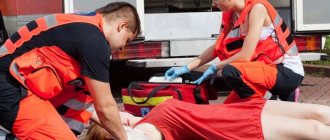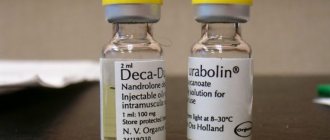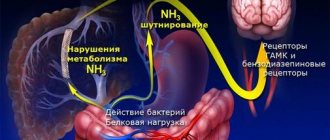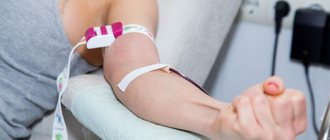Types of frostbite
Frostbite can occur due to tight shoes, excessive sweating of the feet, wet clothes, uncomfortable posture, smoking in the cold, body characteristics and the presence of chronic diseases. People with vascular diseases of the legs and disorders of the cardiovascular system are at risk. It is dangerous to be on the street for a long time in a state of fatigue and hunger. The risk of frostbite exists not only in winter, but also in the autumn-spring period with a combination of high humidity and gusty winds. The following types of injuries are distinguished:
- Acute damage to parts of the body.
- Hypothermia (internal organs and systems of the body are negatively affected).
- Frostbite, accompanied by tissue death.
- Chronic damage (vasospasm, redness of the skin, pain when cooling).
It's not just cold air that can cause injury. Among the types of frostbite, contact injuries are also distinguished. They arise due to the contact of exposed areas of the body with icy metal objects.
How dangerous is frostbite?
Frostbite can significantly damage many systems of the body.
“Frostbite is dangerous not only due to local complications - tissue necrosis, gangrene, loss of fingers, feet, and hands. Poor circulation can have long-term consequences - inflammation of the respiratory system, gastrointestinal tract, nerves,” warns Alexander Korotaev.
And, of course, it is very harmful to the skin.
“Frostbite is dangerous due to infection of soft tissues through damaged skin and blisters, complete tissue necrosis, with the development of dry, and if infected, wet gangrene,” says Mikhail Krylov.
Signs of frostbite
Cold provokes complex processes in tissues, including cell death. The blood vessels narrow, and the flow of blood to the internal organs increases. When exposed to cold for a long time, vasospasm occurs and blood flow slows down. The skin freezes first, then the subcutaneous layer, muscles and even bones. Hypothermia is accompanied by weakness, drowsiness, and possible loss of consciousness.
The first signs are numbness and tingling.
When exposed to air for a long time, the body temperature decreases, the pulse slows down, the skin turns pale, and sensitivity disappears.
The severity of the injury cannot be determined quickly and becomes apparent after rewarming. The victim begins to experience pain, the tissues swell and turn red, and with deep frostbite, blisters filled with blood fluid may appear.
The structure of the skin of children differs from that of adults, which is why frostbite occurs faster in them. Preschoolers are not able to control their condition and may continue to walk. Redness of the cheeks is a normal reaction of blood vessels to cold, and pale skin is a signal of the initial stage of frostbite.
Consequences of frostbite
Treatment of frostbite must be started as soon as possible - injuries of this kind develop very quickly and, in the absence of timely treatment, lead to serious complications. Among the common consequences of frostbite are the following: • the formation of hypertrophic granulations and scars in place of dead skin, which can only be removed surgically; • infection of the wound as a result of pathogenic bacteria entering it; • development of systemic disorders of vascular function in the extremities, especially the lower ones; • blood poisoning (sepsis) as a result of the ingress of decay products of necrotic tissue into it; • development of gangrene with the subsequent need for amputation of the affected limb. To avoid all these unpleasant consequences, it is necessary to take timely measures - provide first aid and consult a doctor at the first opportunity. Only a specialist can accurately determine the extent and severity of the lesion and provide treatment recommendations.
Degrees of frostbite
Depending on the severity and consequences, there are several stages of damage.
Frostbite 1st degree
– a mild form of injury. Appears with short exposure to cold. Blood circulation is impaired, the skin turns pale, and the affected area loses sensitivity. The damage is reversible, the tissues do not die. After warming up, a person feels a burning sensation, the affected area turns red, and swelling occurs. After a few days, the skin recovers on its own.
Frostbite 2nd degree.
The primary signs of frostbite are the same as in the first stage. The main difference is the appearance of blisters, which can lead to infection. The victim experiences pain, burning, itching. Recovery occurs after 1-2 weeks, scars do not form.
Frostbite 3rd degree
It is very painful and bloody blisters may appear. Cells die, tissues turn black and are rejected, causing suppuration. Recovery takes up to 60 days, and scars remain on the affected area.
Frostbite 4th degree
. The lesion affects not only tissues, but also bones. The skin becomes covered with dark blisters, the victim does not feel pain. Fingers turn black. After a week, a line appears that demarcates living and dead tissue. The rejection of dead cells continues for a long time, often complicated by purulent infection.
Statistics show that most cases of frostbite that lead to amputation of limbs occur in people who were heavily intoxicated.
Iron frostbite.
The most common case is the tongue sticking to a metal fence or other structure. In this case, you need to pour warm water over the clutch area or warm it with your breath. The affected area should be disinfected; if the wound is deep, consult a doctor.
To avoid such situations, you should not give your child a shovel with an iron handle, and it is better to cover the metal parts of the sled with a blanket.
Symptoms
Clinically, the following periods of frostbite development are distinguished:
- pre-reactive or latent (lasts several hours - days);
- reactive (occurs during warming and restoration of blood flow):
- early (lasts up to 12 hours from the start of warming, microcirculation disorders occur, disturbances in the structure of the vascular wall, blood clots form);
- late (necrosis develops and infection may occur).
First, frostbitten patients experience numbness and paresthesia of the affected area; the skin in this area is pale, cold, and its sensitivity is significantly reduced (latent period).
After warming up (reactive period), victims begin to experience itching, pain, tingling, and burning at the site of frostbite. The skin becomes warm, turns red, and swelling occurs.
Local tissue changes vary in depth. Depending on this, it is customary to indicate the degree of frostbite that has developed. But it can only be determined upon the onset of a full-blown reactive period (several days after cold injury). There are four degrees (I-II - superficial, III-IV - deep):
- I degree - the resulting vascular disorders do not affect sensitivity and movements, they disappear after 5 or 7 days;
- II degree - only the superficial skin layer is damaged, in addition to swelling and hyperemia, blisters with transparent contents appear, restoration of the affected skin is observed by the end of the second week;
- III degree – necrosis of the entire skin and underlying tissue is observed, the resulting blisters are filled with hemorrhagic contents, the skin has a bluish-purple color, swelling spreads beyond the affected area, sensitivity is lost, after rejection of the necrotic scab the skin is not restored, granulations are replaced by rough scars;
- IV degree - necrosis of all soft tissues occurs to the level of joints and bones, clinically at first it is difficult to distinguish it from stage III, the prevalence of edema exceeds the area of the necrotic zone, after about a week the victims develop gangrene (wet or dry) with a distinct line of demarcation.
In addition to local symptoms, with a significant area or depth of the traumatic lesion, general intoxication symptoms appear (fever, nausea, apathy, loss of appetite, tachycardia, etc.).
What not to do if you have frostbite
In case of frostbite, you should not rub the affected area with snow - this will only aggravate the situation, increase the area of injury and damage the capillaries.
In addition, there is a possibility of infection through micro-abrasions. Do not warm your limbs by a fire or put them in hot water. A sharp change in temperature increases the destruction of affected tissues and promotes the formation of blood clots in blood vessels. If you have frostbite, it is prohibited to drink alcoholic beverages. Alcohol dilates blood vessels, a person thinks that he is warm, but in fact this feeling is deceptive. You should not smoke, as this will slow down the flow of oxygen to the tissues. Not reacting to an injury is also very dangerous; without first aid, the consequences can become irreversible.
Causes
In addition to the direct effects of cold, frostbite can occur due to:
- climatic factors (strong wind, high humidity, temperature changes);
- smoking;
- tight shoes or constrictive clothing;
- alcohol intoxication;
- overwork;
- vascular diseases;
- exhaustion;
- previous frostbite.
The resulting vascular spasm and slowing of blood flow cause thrombosis and tissue nutritional disorders. These processes lead to necrosis (necrosis) of the skin and deeper layers.
First aid for frostbite
If the injury is severe, you must call an ambulance.
Before the doctors arrive, the victim must be treated with care; he should not make sudden or unnecessary movements. It is important to provide emergency medical treatment for frostbite as quickly as possible. The first thing to do is take the victim to a warm room. Warming should occur gradually. Next, you should change your clothes to warm and dry ones. If the person is conscious, give him a warm drink. Tea, compote or any other liquid (except alcohol and coffee) will help normalize temperature and blood circulation. Hands and feet can be warmed in the bath, the water temperature should not exceed 33°C, then warm water can be slowly added. After this, you should carefully blot the injured limb with a soft cloth and wrap it in a scarf, blanket, or blanket.
For frostbite, people resort to folk remedies, including warming their hands in water where potatoes or celery were boiled.
After this, since ancient times, the limb was lubricated with goose fat. However, you should not apply oil, cream or fat to frostbitten skin. Oak bark is used for baths and compresses.
Providing first aid for frostbite at home is effective in case of I degree frostbite. If, as the victim warms up, he does not experience severe pain, tissue sensitivity is not impaired, and the injured area of skin returns to its normal state, then a heat-insulating bandage can be applied to it. If symptoms of degree II or III appear within 24 hours, it is necessary to take the patient to the hospital. On the road, he should be given any painkiller that is in the first aid kit.
It is important to remember that repeated exposure to cold on a warmed area of the body leads to even more severe consequences, so you should not begin rewarming if there is no guarantee that the victim will remain warm.
If a person has lost consciousness, then all the time until the ambulance team arrives it is necessary to monitor his pulse and monitor his breathing.
To avoid serious injury, follow these basic rules:
: do not go outside without a hat, mittens and scarf; do not smoke in the cold; use special creams; don't stand in the wind. Frostbite can occur in just a few minutes, so in severe frost it is better not to risk it and stay home. People working outside in winter must use personal protective equipment.
Added: 12/21/2021
Clinic from scratch
Who among you has never forgotten gloves or mittens in winter and left the house without them, and then tried to warm your hands under warm water? Even though spring is already close, the topic of frostbite is still relevant, especially for young children, because their skin is much more delicate than the skin of adults. In conditions of high humidity and wind, frostbite is possible even at above-zero temperatures. This is something to consider when getting your baby ready for a walk. Today we will learn what frostbite is, find out their degrees, and also talk about the prevention and treatment of frostbite in children.
Frostbite (or frostbite) is damage that occurs when locally exposed to low temperatures. Irrational clothing contributes to the occurrence of frostbite. Most often, protruding areas are affected - ears, nose, chin (usually as a result of exposure to low temperatures and cold air).
Occasionally, children may experience frostbite on the lips and tongue, which occurs when trying to lick very cold metal objects. Complaints: the presence of pale, “numb” areas of skin that have lost sensitivity.
The main task of parents when children spend a long time on the street, on the way to kindergarten or school, is to monitor how the child is dressed. Frostbite occurs more often in children and is more severe than in adults. This is due to the fact that the subcutaneous fatty tissue, blood vessels and nervous system of a child, especially of preschool age, are still in the process of formation and growth, and cannot fully withstand the cold. Therefore, all parents are recommended to check how and what they are wearing before letting their children go for a walk.
Children of preschool age cannot yet make complaints on their own, so parents need to pay attention to lethargy, increased body temperature, paleness or redness on the ears, cheeks, fingers and toes, calves, knees, as well as on the external genitalia in boys.
Older children complain of pain in the area of frostbite, tingling, burning sensation, redness, and lack of sensitivity.
During frostbite, two periods are distinguished: the period of local tissue hypothermia, or areactive (before rewarming), and the reactive period (after rewarming). In the period before warming up, those affected feel a feeling of cold, tingling and burning in the frostbite area, then a complete loss of sensitivity occurs. The affected area has a characteristic appearance: the skin is pale or bluish, the limb is not capable of active movements, and gives the impression of being petrified. During this period, it is impossible to determine the extent and extent of tissue damage, since there are no signs of inflammation in them and they seem viable. In the second period, after warming up, swelling quickly develops in the area of frostbite, and then inflammatory or necrotic changes are gradually revealed, so that the true severity of frostbite can be determined only after 10-15 days. Frostbite (or frostbite) is tissue damage caused by exposure to low temperatures.
There are several periods in the development of frostbite in children:
Pre-reactive period - or latent period. Occurs outdoors when exposed to low temperatures. The skin at the site of the lesion becomes very pale. During this period, it is impossible to determine the degree of frostbite. Its danger lies in the fact that the longer the latent period lasts, the more tissue is affected.
Reactive period. It begins from the moment the tissues are warmed. The child experiences pain in damaged tissues. The skin changes from pale to red or cyanotic (turns blue), tissue swelling is observed, and sensitivity is impaired. During this period, it is already possible to determine the degree of frostbite.
Let's consider the classification of frostbite in children:
Grade 1 - redness and slight swelling of the affected area are observed. Symptoms at this degree are as follows: burning, itching, loss of sensitivity, pain. After a few days, the symptoms disappear even without treatment, and slight peeling of the skin is observed.
2nd degree - in the affected area there is the appearance of a bubble with transparent or whitish contents, the skin around the bubble is white, sensitivity is reduced. The child often has a fever, chills, and weakness. At this and further stages, treatment is carried out only under the supervision of a doctor.
3rd degree - the frostbitten area is a bubble with purple-bluish contents, around which a demarcation shaft is formed (a ring separating dead necrotic tissue from living ones). Severe swelling is also noted. With this degree of frostbite, all layers of the skin are affected and gangrene may develop if the wound becomes infected. The skin is completely insensitive to the pain of a needle prick.
Grade 4 - characterized by necrosis of all tissues, including bones. The demarcation line appears only by the second week, and the entire affected area becomes clear. The skin at the site of frostbite is black, there is complete absence of sensitivity, and there is no pain. Recovery occurs after 2-3 months.
It is well known that frostbite does not occur without cold. However, it has been established that at an ambient temperature of +16°C, unprotected skin begins to rapidly lose heat, and at temperatures from +15 to -21°C, under conditions of high humidity and prolonged exposure to this temperature, frostbite is possible.
All factors contributing to the occurrence of frostbite are divided into four groups:
- meteorological - high humidity, strong wind, sudden and rapid change in air temperature;
- mechanical, impeding blood circulation in the limbs - tight clothing and shoes;
- contributing to a decrease in local tissue resistance - previously suffered frostbite, excessive flexion and immobility of the limbs, local disease of the limbs;
- causing a decrease in the overall resistance of the body - injuries and blood loss, acute infectious diseases, exhaustion and fatigue, hunger, disorders of consciousness, alcoholism, excessive tobacco smoking, and physical developmental deficiencies.
The role of alcohol intoxication is not only to turn off or reduce consciousness, impair motor activity, underestimate the danger of cold, etc., but also to reduce the body’s sensitivity to the effects of cold, i.e. the influence of alcohol is diverse. Other factors contributing to the occurrence of frostbite are insufficient attention to clothing in low temperatures and lack of alertness when the first signs of frostbite appear. Be that as it may, a healthy, warmly dressed, well-fed and active person, even at extremely low temperatures, is able to withstand their effects.
What to do if a child has frostbite
- In case of frostbite, it is necessary to stop the effects of cold on the body as quickly as possible - take the child with a frostbitten area of skin home.
- At home, carefully remove cold clothes from your child.
- You can warm frostbitten limbs in baths. The water in them should gradually change from +20 to +37⁰ The water should not be hot. If your nose or ears are slightly frostbitten, you can gently and gently massage them with your fingertips to restore blood supply.
- Remember that from the moment the tissues are warmed, pain appears, so try to calm the baby down, explain to him what is happening, be gentle, he is already feeling bad.
- Apply a dry thermal insulating bandage to the damaged area of the skin (bandages with cotton wool - a bandage, a layer of cotton wool, then a bandage again so that the cotton wool does not move out, put an oilcloth on top. Each layer should be larger than the previous one), secure on top with a woolen cloth.
- If a limb is frostbitten, it is necessary to immobilize it - that is, to ensure immobility. If you do not know how to apply splints, just make sure that the child does not move the limb, because An incorrectly applied splint will only worsen the situation and cause pain to the child.
- It is recommended to provide general warming to the patient - warm drinks, warm clothes.
- When providing first aid to your child, immediately call an ambulance, because only a doctor will be able to correctly determine the degree of frostbite and adjust further measures.
- With second, third and fourth degrees of frostbite, the child is taken to the hospital, so be prepared for this!
In no case should you do the following if you have frostbite:
Do not rub the frostbitten surface with snow! Snow causes damage to the capillaries of the skin, which will further worsen the recovery processes of the frostbitten area of the skin.
So-called rapid warming should not be used. Those. apply heating pads to frostbitten areas, bring the child close to the fire or fireplace, warm the child in hot water.
Do not rub oils, fats, or alcohol into damaged skin! All these methods for degrees 2-4 frostbite greatly aggravate the course of frostbite, and since it is impossible to immediately determine the degree of frostbite, refrain from such methods until the ambulance arrives.
Frostbite can happen to anyone, but it's best to follow a few simple rules to prevent it.
Feed your baby before going outside. Hunger = lack of energy in the body = inability to maintain body temperature at low temperatures = rapid cooling of the skin.
Clothing: main rules
- A sufficient minimum! If you can do without some kind of padded jacket, do without. Develop in your child the habit of dressing himself - choosing the number of things to wear. Colds often occur not from hypothermia, but from excessive sweating caused by excess clothing.
- “Walking without a hat causes meningitis” is a typical example of a folk tale. Meningitis is an acute infectious disease. In 99% of cases it is caused by a microbe called meningococcus. The likelihood of encountering a microbe does not depend on what is on your head at that time.
- In the vast majority of cases, the child says “I’m cold” due to the fault of the parents. After all, putting three fur coats on him and chatting with girlfriends (friends) is much easier than going for an active walk (running, playing).
- There is absolutely no point in covering your mouth with a scarf. Not a single scarf can even come close to matching the mucous membranes and sinuses of the nose in its ability to warm the inhaled air.
The child's winter outerwear should be made of waterproof fabric, because... If the clothes are wet, the child quickly freezes.
It is also better to purchase mittens with a waterproof outer fabric and/or you can take spare mittens with you and change them after the game before going home. You should choose a hat so that the child’s ears are completely and securely covered! When buying a hat, ask your child to shake his head, because... When playing outside, hats often slide to the side and ears open up.
The baby's shoes should not be too tight, but must have a warm insole. In severe frost, it is better to wear woolen socks under boots, because... Wool absorbs moisture well, while keeping the legs dry. But you should take into account the temperature outside, otherwise the baby’s feet will first sweat and may freeze due to the increased humidity.
In windy weather, reduce the time you walk with your baby (the wind helps to cool the baby faster). Before going out, you can use a special protective baby cream for frost.
While walking, watch your child’s face, ears, and hands. At the slightest sign of hypothermia (pale skin), go home immediately.
Upon arrival home, check all the child’s skin for frostbitten areas. Advanced frostbite can lead to gangrene, and subsequently amputation.
You need to go for a walk in any weather, the main thing is to know when to stop and not stand still, but play outdoor games.
Treatment of frostbite is different in the period before and after rewarming. In the first period, it is necessary to quickly stop exposure to external low temperatures and warm the victim’s entire body. For this purpose, the victim is placed in a bath at a water temperature of 37-40°. He should remain in the bath until the body temperature rises to normal (in case of freezing) and a feeling of thermal comfort occurs. If frostbite is not accompanied by symptoms of freezing, the patient can be warmed in a warm room, immersing only the affected limbs in warm water (t° 37-40°). When warming up, you should carefully and gently massage the frostbitten areas. The massage is performed with cleanly washed hands, disinfected with alcohol, or wearing sterile gloves. If blisters have already formed or areas of necrosis are found, massage is not performed. After warming, the skin is treated with alcohol and a sterile insulated bandage is applied to the frostbitten areas. For all types of frostbite, it is necessary to administer a prophylactic dose of antitetanus serum (3000 AE) and tetanus toxoid (0.5 ml). Previously, those vaccinated against tetanus were given only toxoid, without serum.
A serious mistake is rubbing frostbitten limbs with snow or immersing them in ice baths. This does not lead to the warming of frostbitten hands or feet, but to their further and very intense cooling. In the following days, treatment is carried out depending on the severity of frostbite. For frostbite of 1st and 2nd degree, treatment is only conservative - toilet; aseptic dry dressings. Bubbles, if they are not damaged, cannot be cut or opened; in case of opened, suppurating blisters, the exfoliated epidermis should be removed. In case of frostbite of the 3rd degree, conservative treatment is continued until the dead skin areas are rejected, in case of frostbite of the 4th degree - until the true severity of frostbite is revealed. Bandages with weak antiseptics (for example, Vishnevsky ointment) are placed on festering and granulating surfaces.
Surgical treatment is indicated for grade 3 frostbite and consists of plastic replacement of granulating defects formed after rejection of the dead area through skin grafting (autoplasty). With grade 4 frostbite, amputation is inevitable. Along with local treatment, for any degree of frostbite, the patient needs increased nutrition, the introduction of increased amounts of proteins and vitamins. According to indications - cardiac medications, antibiotics.
- Early:
- nails falling off,
- development of dry and wet gangrene,
- sepsis due to infection,
- amputation.
Late (distant), difficult to treat, requiring the involvement of a neurologist, phlebologist, or orthopedist:
- increased reaction to cold, cyanosis (blue skin);
- blood flow disorder, sclerotic changes in blood vessels, trophic lesions;
- bone atrophy, arthritis, polyneuritis, arthrosis, joint contracture;
- endarteritis with obliteration (vascular obstruction) of the lower extremities;
- Raynaud's syndrome.
Protective balm against wind and cold Weleda
This brand has long and reliably proven itself among other children's products, and needs no introduction. The big plus of this cream is that it does not contain water. This means that you don’t even have to wait the required 15-30 minutes before going outside, but immediately dive into the cold without fear of redness and chapping. Beeswax and skin-related lanolin in the cream form a protective cover, allowing the skin to breathe. The extract of calendula flowers eliminates inflammation on the skin, and almond oil increases the elasticity and protective properties of the skin. The balm is especially recommended for babies whose skin needs protection from the weather, and children with inflamed skin. Suitable for adults with sensitive skin.
Cryoprotector from Mirra Lux (Kutelitsa)
An excellent cream that is suitable for both children and adults. It enhances capillary blood circulation, and also nourishes, moisturizes and improves skin elasticity. The cream has a good natural composition and a pleasant smell of herbs and essential oils. It is good to smear on your hands, face and neck during outdoor winter sports and long walks. The composition contains water, so you need to apply it in advance. The composition also includes cedar, castor and milk thistle oils, extracts of propolis, nettle, ginseng, green tea, urea, glucose, beta-carotene, vitamins E, F, C. In general, you can safely take it.
Nourishing cold cream from Avene
Cream for dry and atopic skin, suitable for infants, children and adults. The texture is quite heavy, but it protects against frost perfectly! It does not contain fragrances or parabens and is generally ideal for those unfortunate people who are allergic to frost and bad weather.
Chicco Baby Moments
This product forms a protective film on children's skin, but is not at all sticky or greasy, and does not allow wind and frost to damage delicate cheeks. Does not contain dyes, alcohol, parabens and is safe for babies. Pleasant aroma, delicate consistency. A wonderful savior during walks in windy autumn and frosty winter.
Cream for wind and bad weather from Bubchen
The cream reliably protects even the most sensitive skin, providing it with protection from adverse weather factors. Vitamin E additionally supports cell functions, chamomile extract has an anti-inflammatory, antibacterial effect, soothes, softens and moisturizes the skin. When going for a walk with your baby, 30 minutes before going outside, simply apply “Cream for Wind and Bad Weather” on exposed areas of the body, and you will no longer be afraid of any bad weather.
Morozko from Avant
Perhaps the most affordable of our entire list, but no less effective. Yes, it happens that it is not suitable for some children, especially those who are severely allergic to cold, but for the majority it is very suitable. The only downside is the parabens and mineral oils in the composition, which are not very suitable for children's skin. But if the advice of experienced mothers is important to you, and not the composition, then you can safely buy it. It's at least worth a try.
Cream against wind and bad weather, SANOSAN.
Contains white wax, sweet almond oil and avocado oil. Intensively protects exposed skin in any weather from chapping and redness.
Baby walking cream, Bella baby Happy natural care
Cares, protects and strengthens the skin's natural protective barrier. Contains olive oil, which protects baby's sensitive skin from adverse weather conditions, as well as shea butter, which neutralizes the negative effects of sunlight.
Multi-regenerating product for sensitive and irritated skin Cicaplast balm B5, La Roche-Posey.
Instantly reduces discomfort caused by irritation thanks to the content of panthenol, La Roche-Posey thermal water and shea butter. Contains antibacterial components. Suitable for babies.
Mustela Bebe Cold Cream.
Quickly absorbed, provides long-lasting hydration and restores the protective mechanisms of damaged skin. Eliminates the effects of unfavorable climatic conditions, leaving the skin soft and velvety.
In conclusion, it is worth saying that frost is not a reason to stay at home. It is important to follow some rules, and most importantly, do not stand still while walking and play outdoor games, and then no temperatures will be terrible.






